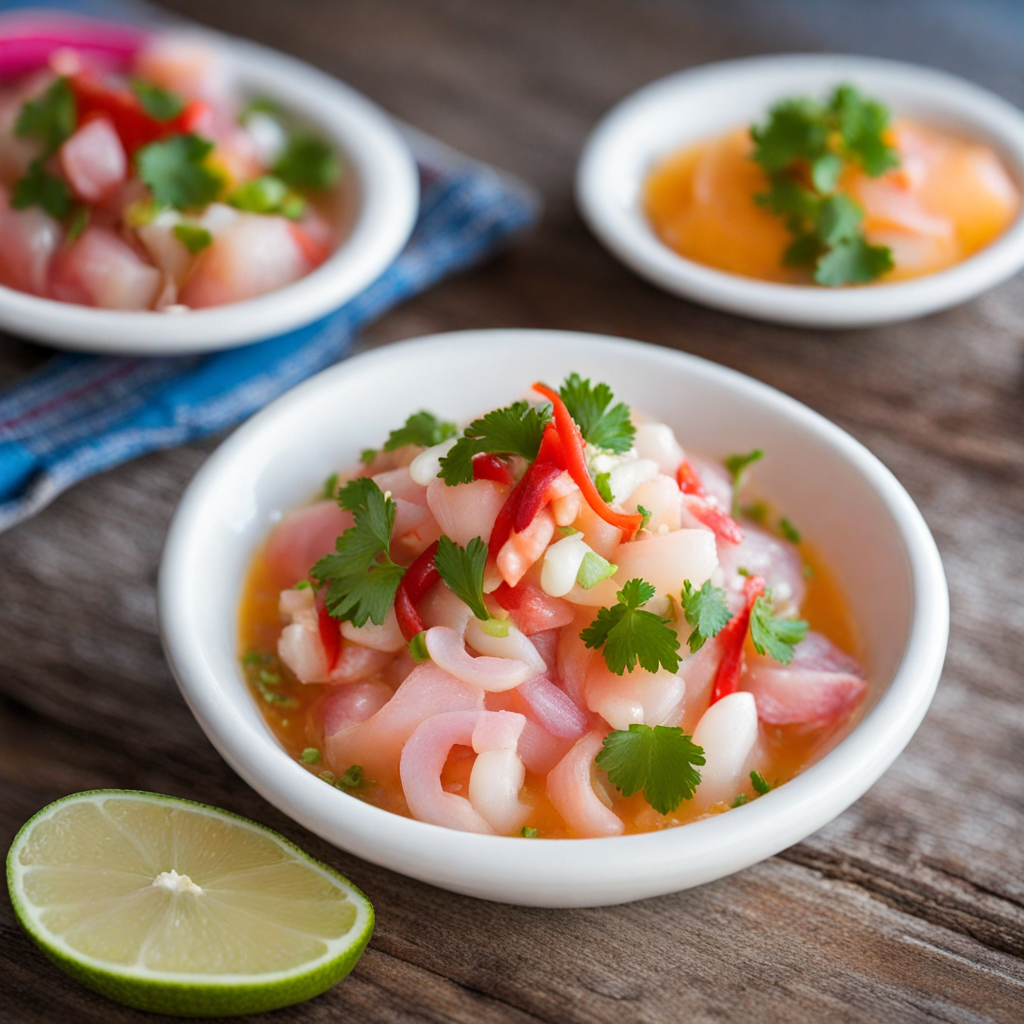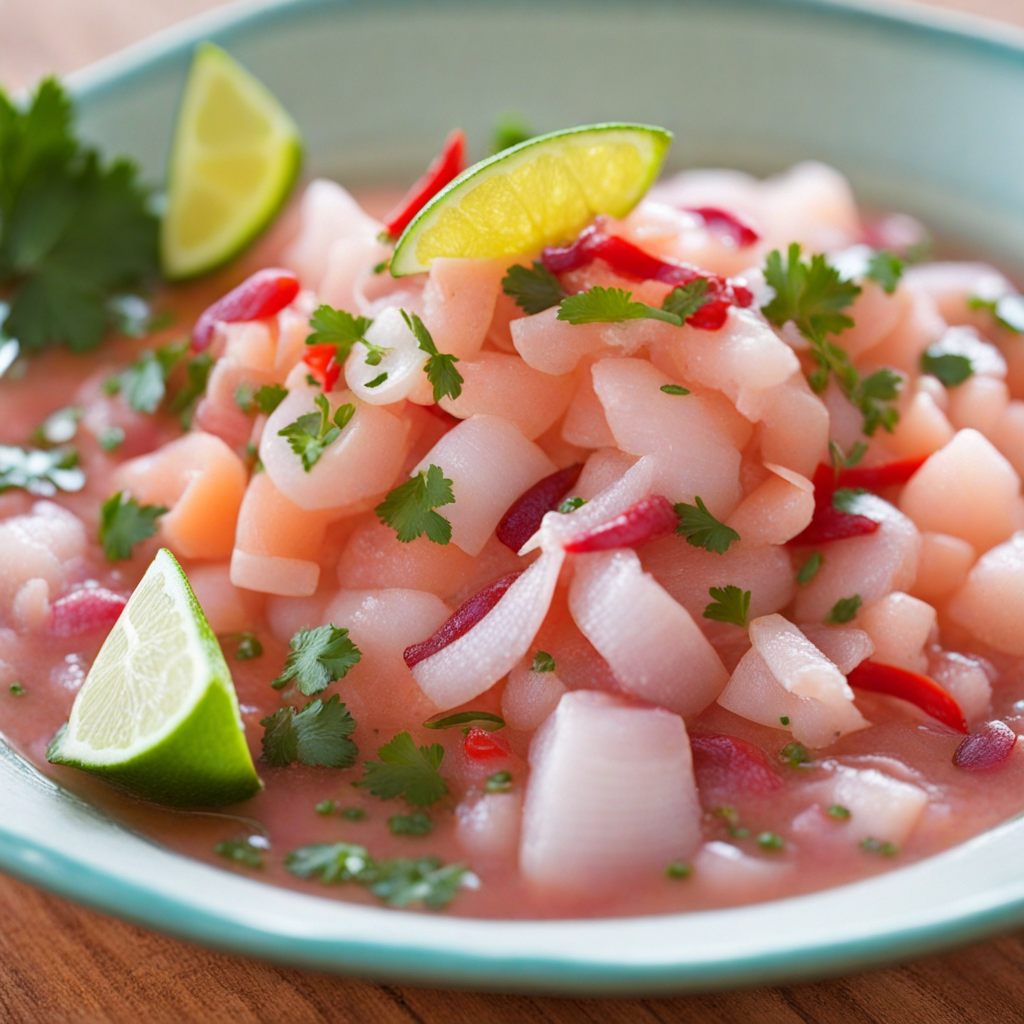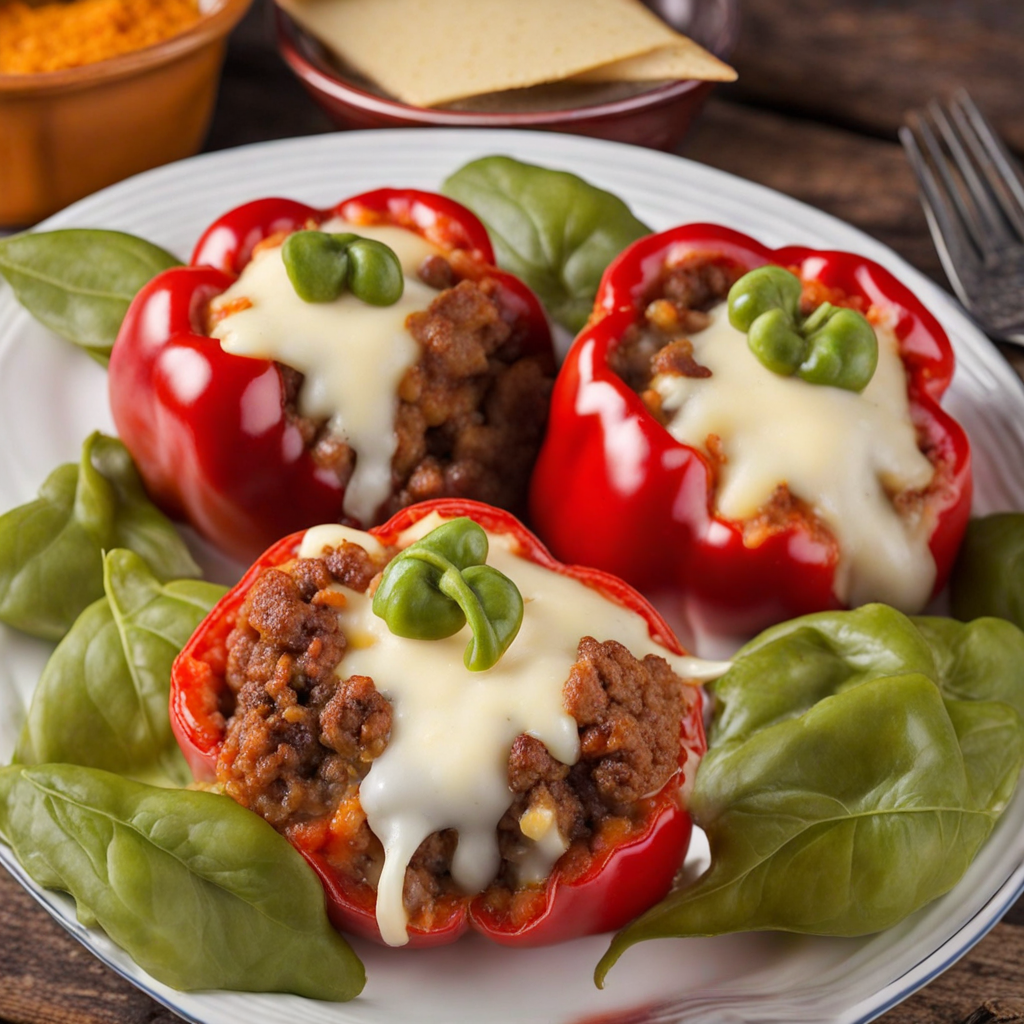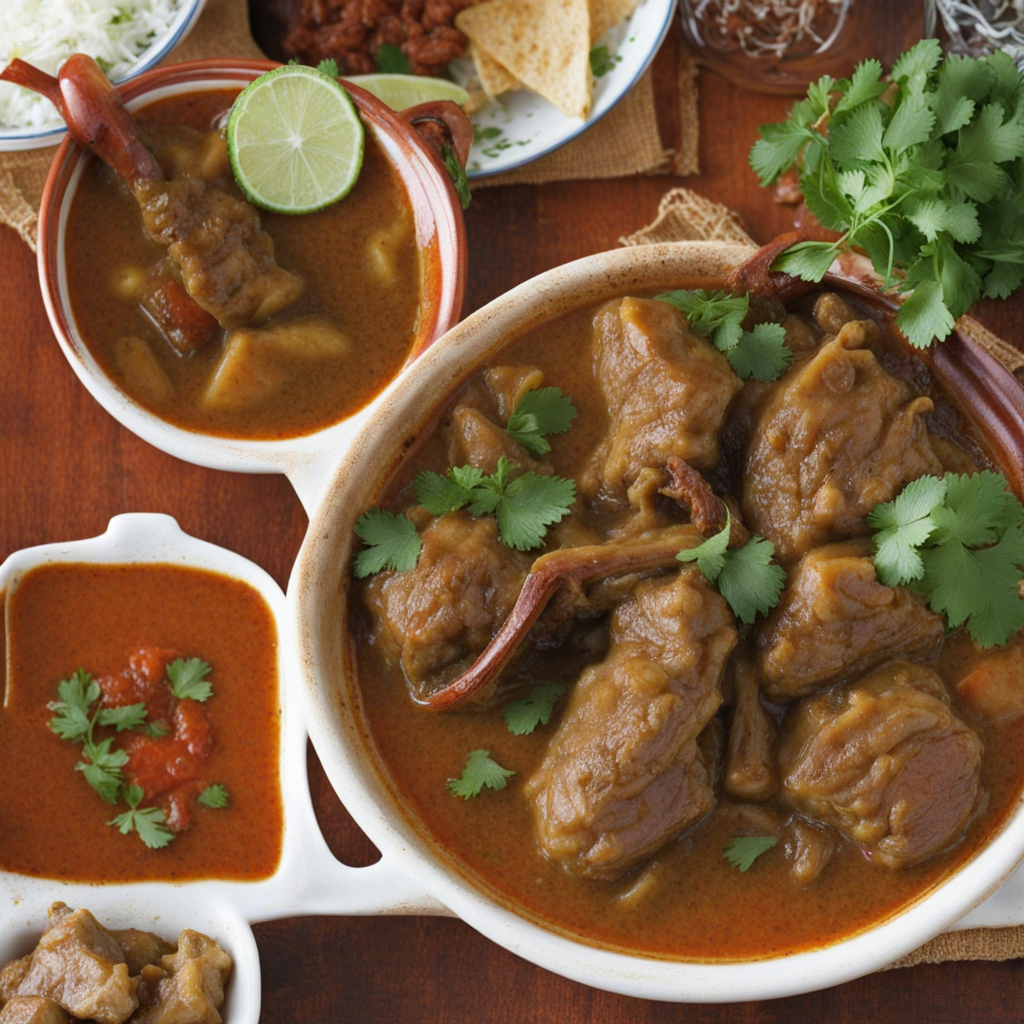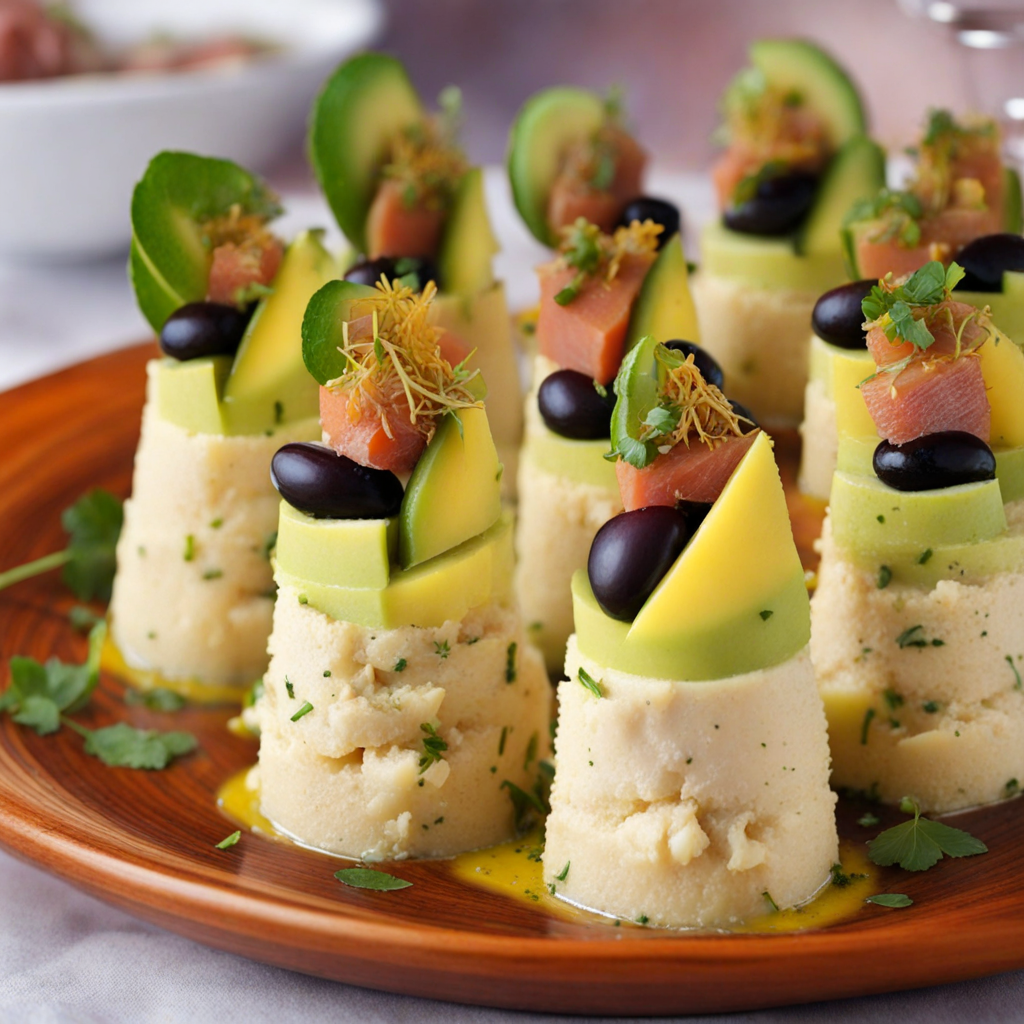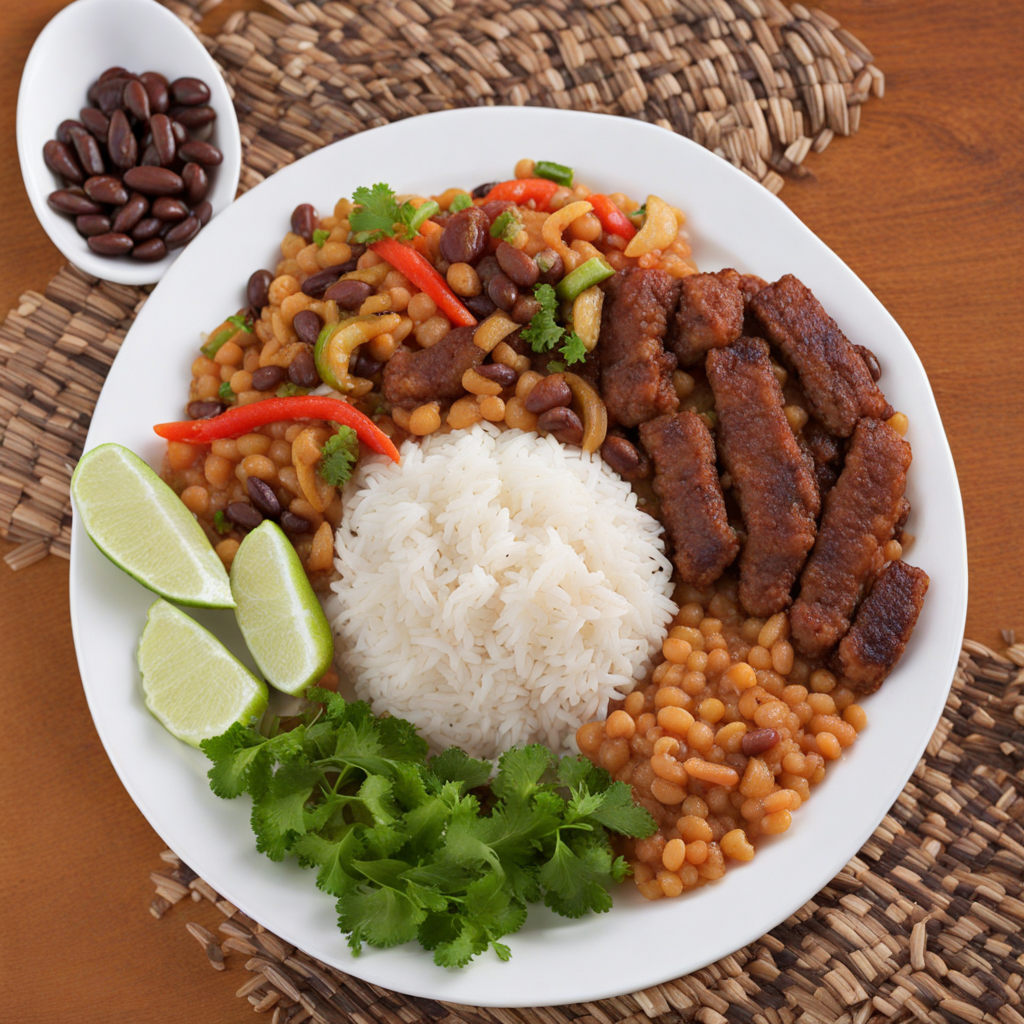Ceviche
Ceviche is a quintessential dish from Peru, celebrated for its vibrant flavors and refreshing qualities. Its history dates back to ancient times, with roots tracing to the indigenous peoples of the coastal regions of Peru. The earliest forms of ceviche utilized local fish marinated in fermented fruit juices, such as the juice of the chicha (a traditional Peruvian beverage made from maize). With the arrival of the Spanish in the 16th century, the introduction of citrus fruits, particularly limes and lemons, transformed the dish into what we recognize today. Over the centuries, ceviche has evolved, showcasing the rich cultural tapestry of Peru and its culinary innovations. The flavor profile of ceviche is a harmonious blend of acidity, freshness, and umami. The primary component, raw fish, is typically marinated in freshly squeezed lime or lemon juice, which "cooks" the fish through a process called denaturation. This results in a tender texture and a bright, zesty flavor that is both refreshing and invigorating. The addition of key ingredients, such as cilantro, onions, and chili peppers, enhances the dish, providing depth and a spicy kick. The balance of these flavors makes ceviche a delightful experience, perfectly encapsulating the essence of Peru’s coastal gastronomy. Preparation of ceviche is relatively straightforward but requires precision and quality ingredients. The process begins with selecting the freshest fish, which is critical for safety and flavor. Common choices include firm white fish like sea bass, tilapia, or fl
How It Became This Dish
Ceviche, a dish that has become synonymous with Peruvian cuisine, boasts a rich tapestry of history, culture, and evolution. Often regarded as the national dish of Peru, ceviche has transcended its humble beginnings to gain international fame, yet its roots are deeply intertwined with the coastal regions of South America. This engaging history of ceviche will explore its origins, cultural significance, and the development of this beloved dish over time. Origins The origins of ceviche can be traced back to the ancient civilizations of Peru, particularly the Moche and the Inca, who inhabited the coastal regions more than 2,000 years ago. These cultures relied heavily on the ocean for sustenance, and fish was a primary source of protein. The Moche, known for their advanced agricultural techniques and intricate pottery, are believed to have marinated fish in a mixture of local fruits and spices, a practice that laid the groundwork for the ceviche we know today. However, it was during the Spanish colonization in the 16th century that ceviche truly began to take shape. The introduction of citrus fruits, particularly limes and oranges, by the Spanish played a pivotal role in the evolution of this dish. The acidity of citrus not only provided flavor but also acted as a natural preservative, allowing fish to be safely consumed without cooking. This combination of fresh fish, citrus juice, and local seasonings became the hallmark of early ceviche. Cultural Significance Ceviche is more than just a dish; it is a cultural symbol of Peru, reflecting the country’s diverse geography and rich culinary traditions. The preparation and consumption of ceviche are deeply linked to coastal communities, where fishing is a way of life. It is often served in casual settings, at seaside shacks, and upscale restaurants alike, making it a versatile dish that caters to all walks of life. In Peruvian culture, ceviche is often associated with celebration and social gatherings. It is a staple at family gatherings, fiestas, and national holidays. Traditionally, it is enjoyed as an appetizer, but it can also be served as a main dish. The ritual of preparing ceviche is an art form in itself; from selecting the freshest fish to balancing the flavors of lime, chili, onions, and cilantro, each step reflects a profound connection to the land and sea. Ceviche also represents the cultural fusion that characterizes Peruvian cuisine. The influence of indigenous ingredients, Spanish techniques, and later Asian flavors—particularly from Chinese and Japanese immigrants—has created a unique culinary landscape. This cross-pollination is evident in variations of ceviche that incorporate ingredients like soy sauce and ginger, highlighting Peru's diverse gastronomic heritage. Development Over Time As ceviche evolved over the centuries, regional variations began to emerge, each showcasing local ingredients and culinary traditions. One of the most notable styles is "ceviche clásico," which features raw fish marinated in lime juice, sliced red onions, and aji (a type of chili pepper). This classic version is typically served with sides such as sweet potato, corn, and sometimes avocado, creating a harmonious balance of flavors and textures. In the coastal city of Lima, ceviche gained particular prominence, leading to the establishment of specialized cevicherías—restaurants dedicated to serving this dish. Lima's ceviche is often celebrated for its freshness and complexity, drawing locals and tourists alike. The city's ceviche has even been recognized by food critics and culinary enthusiasts as one of the best in the world. Throughout the 20th century, ceviche continued to evolve, influenced by both local and global culinary trends. The introduction of new ingredients and preparation methods led to creative interpretations. For instance, the "tiradito," a dish that shares similarities with ceviche but features fish cut into thin strips and served with a spicy sauce, emerged as a popular alternative. Tiradito showcases the influence of Japanese sashimi techniques, further illustrating the fusion of culinary traditions in Peru. The 21st century has seen a surge in the popularity of ceviche beyond Peru's borders. With the rise of global gastronomy and an increasing interest in fusion cuisine, ceviche has captured the attention of chefs and food lovers worldwide. International chefs have experimented with various proteins, including shrimp, scallops, and even vegetables, broadening the scope of what ceviche can be. This adaptability has allowed ceviche to maintain its relevance while embracing innovation. In recent years, efforts have been made to preserve the traditional methods of ceviche preparation. Organizations and culinary schools in Peru are working to educate the next generation of chefs about the historical significance and techniques behind this iconic dish. As the global palate becomes more adventurous, there is a renewed appreciation for authentic ceviche, rooted in its cultural heritage. Conclusion Ceviche is a dish that encapsulates the spirit of Peru—its history, geography, and cultural diversity. From its ancient origins to its contemporary interpretations, ceviche has undergone a remarkable evolution, embodying the richness of Peruvian cuisine. Today, it stands as a symbol of national pride, a cherished dish that reflects the interplay between tradition and innovation. As the world continues to embrace the flavors of Peru, ceviche will undoubtedly remain a culinary ambassador, inviting people to explore the vibrant culture and history of this South American nation. Whether enjoyed on a bustling Lima street corner or in a high-end restaurant, ceviche tells a story—a story of the land, the sea, and the people who have lovingly crafted it for generations.
You may like
Discover local flavors from Peru


